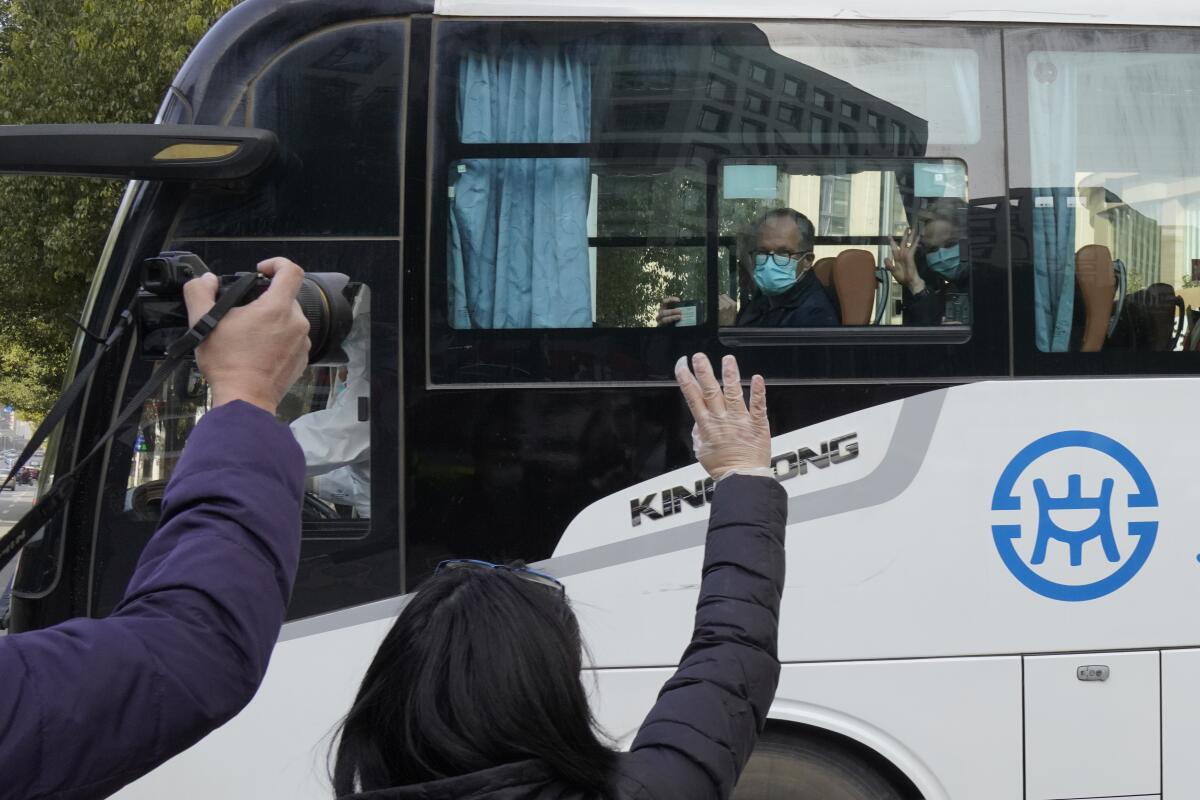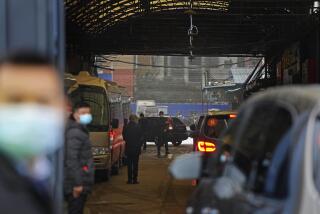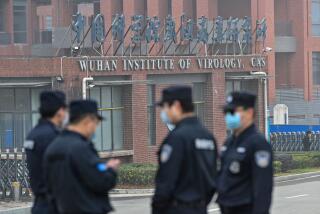How experts will hunt for COVID origins in China

BEIJING — After a two-week quarantine, the real work can begin. Maybe.
A World Health Organization team of researchers has emerged from their hotel for the first time since their arrival in the central Chinese city of Wuhan to start searching for clues into the origins of the COVID-19 pandemic.
The visit has been shrouded in secrecy: The WHO tweeted a few details of what they will do, but it’s unknown how much access China will give the researchers to the sites they want to visit and the people they want to talk to.
WHY IS THE TEAM IN CHINA?
Scientists hope that information on the earliest known cases of the new coronavirus — which was first identified in Wuhan — will help them better understand where it came from and prevent similar pandemics in the future.
Researchers around the world are eager for access to samples taken from the Huanan Seafood Market, which had an early outbreak, and Wuhan hospital records.
The WHO said in its tweets that the team would meet with Chinese scientists before starting field visits in and around Wuhan. It plans to visit hospitals, laboratories and markets, including the Wuhan Institute of Virology, the Huanan market and the Wuhan Center for Disease Control laboratory, the WHO said. It said the team would speak with early responders and some of the first patients.
A laboratory at the Wuhan Institute of Virology that was built after the 2003 SARS pandemic maintains an extensive archive of genetic sequences of bat coronaviruses. U.S. officials in the Trump administration suggested without offering evidence that the virus could have escaped from the institute.
Experts say it’s unlikely the new coronavirus emerged from the lab in Wuhan and overwhelmingly say analysis of the new coronavirus’ genome rules out the possibility that it was engineered by humans.
The market and other places where early cases emerged remain important because the virus is constantly evolving, as the new variants identified in the United Kingdom and South Africa show.
WHAT DO RESEARCHERS HOPE TO LEARN?
Wuhan is where COVID-19 cases were first detected, but it is highly possible the virus came to the industrial city of 11 million people from elsewhere.
Genetic sequencing shows the new coronavirus started in bats and likely jumped to another animal before infecting humans. The virus that is the closest known relative of the one that causes COVID-19 has been found in bats in a mine shaft nearly 1,000 miles southwest of Wuhan, near China’s border with Laos, Myanmar and Vietnam. The Associated Press was blocked from visiting the mine.
People began falling ill in Wuhan in December 2019, and many had links to the seafood market. Scientists initially suspected the virus came from wild animals sold at the market, prompting China to crack down on the wildlife trade.
But the subsequent discovery of earlier cases challenged that theory. China’s CDC said samples taken from the market indicate it was likely a place where the virus spread, not where it started. The WHO team’s ability to further our understanding of the virus — and its credibility — could hinge in part on getting access to those samples.
Studying the genes of the earliest known cases in Wuhan could provide clues to how it got from bats to people and whether it was through a mammal such as a bamboo rat or a civet.
WHAT OBSTACLES DOES THE TEAM FACE?
The big question is what China will allow the researchers to see and do. The ruling Communist Party is concerned the research could shed light on its handling of the virus that could open it up to international criticism — and even demands for financial compensation if it is found to have been negligent.
China has stifled independent reports about the outbreak at home and published little information on its research into the origins of the virus. An AP investigation found that the government has strictly controlled all COVID-19-related research and forbids researchers from speaking to the media.
Another AP investigation found WHO officials privately complained that China had dragged its feet on sharing critical information about the outbreak, including the new virus’ genetic sequence, even as the U.N. health agency publicly praised China for what it called a speedy response.
China, stung by complaints it allowed the disease to spread, has suggested the virus could have come from abroad. A government spokesperson has said the origins hunt will require work beyond China’s borders, including in bat habitats in Southeast Asian nations. An expert on the WHO team has suggested the same thing, and this is a possibility researchers are exploring.
WHEN WILL WE KNOW THE ANSWERS?
The search for the origins of COVID-19 is likely to take years. It took more than a decade to find the origins of SARS, and the origins of Ebola, first identified in the 1970s, remain elusive. But knowing where the virus came from could help prevent future outbreaks of viruses that cross to people from wild animals.
More to Read
Sign up for Essential California
The most important California stories and recommendations in your inbox every morning.
You may occasionally receive promotional content from the Los Angeles Times.










